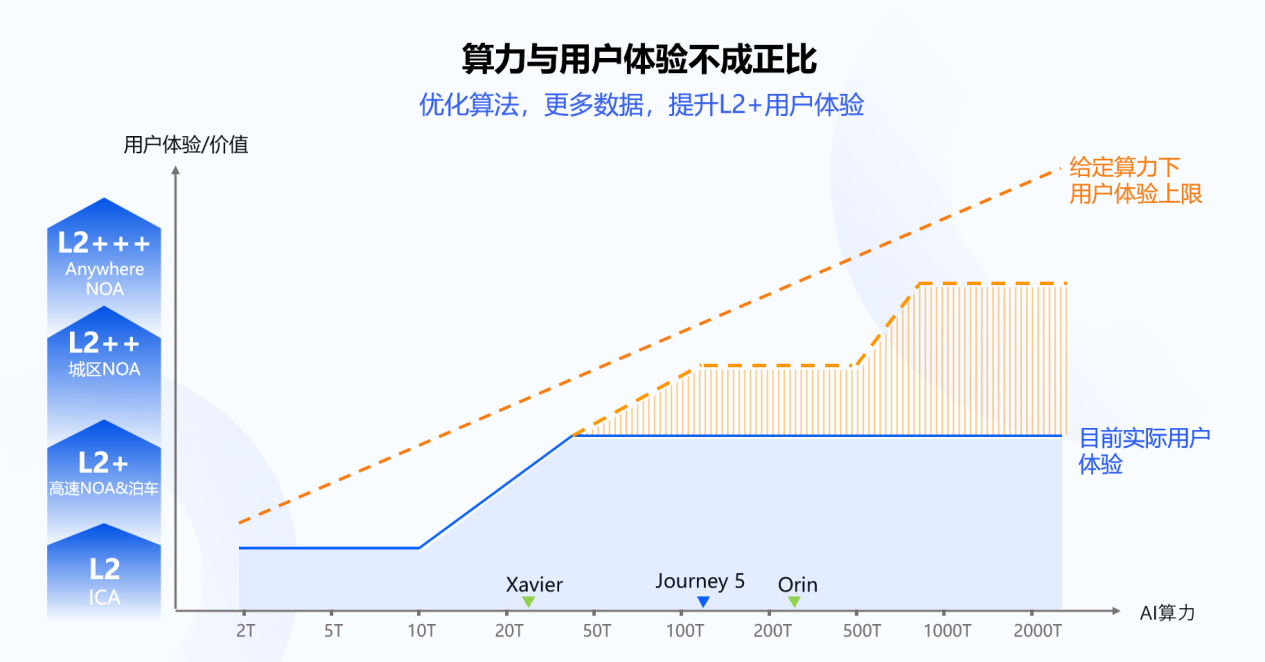Author | Qiu Kaijun Wang Lingfang
Editor | Qiu Kaijun
“I believe that some leading automakers, including Weilai, will launch NOA for urban areas this year. However, I think there are still challenges in technology, and it will take at least three years of research and development to make significant progress.”
On April 1st, Yu Kai, founder and CEO of China’s autonomous driving chip company Horizon Robotics, poured cold water on urban NOA with these words at the China Electric Vehicle 100 Forum.
Yu Kai’s words may upset the following companies: Xpeng, NIO, Lixiang, Huawei, Baidu, Momenta… All of them are about to launch urban NOA (Navigation-assisted Driving Systems) or similar features (covering cities or urban areas, including NGP, NOP, NCA, and NOH). And these companies are virtually all the top players in China’s intelligent driving industry.
Is urban navigation-assisted driving feasible?
What Yu Kai said may not be in great conflict with each company’s stance—mass-produced features must surely be launched, while the experience and technology maturity are related and need continuous improvement.
In my opinion, at the juncture of advancing smart driving features, consumers must distinguish between features and experience. The functionality can be implemented, but when the experience breakthroughs your psychological expectations and those of the general public remains an unknown.
Urban NOA mass production year
Last autumn, three companies were vying for the title of being the first to mass-produce urban navigation-assisted driving, shouting slogans.
As a result, none of them gained widespread industry recognition.
Momenta announced that the Great Wall Mocha DHT-PHEV Laser Radar Edition, equipped with urban NOH, would enter mass production in September, but it actually missed the deadline.
On September 17th, Xpeng Motors announced the launch of a “pilot” urban NGP intelligent navigation-assisted driving system. As it turned out, it was limited to the pilot stage only.
Huawei came the closest to “mass production”—on September 24th, the Extreme Fox Alpha S All-new HI edition in Shenzhen was the first to release NCA smart navigation-assisted city driving features. The sales of the Alpha S All-new HI edition were very small, and even fewer users were in Shenzhen. Objectively speaking, Huawei’s urban navigation mass production had to be qualified with the term “limited scale.”
This year, however, things are very different.
On March 9th, also powered by Huawei’s smart driving technology, the Avita 11 NCA Urban Navigational Driving Assistance System officially launched and opened in Shanghai and Shenzhen, with Chongqing soon to follow.As of April 5th, the cumulative delivery of Avita 11 electric vehicles has exceeded 6,000 units. Moreover, the entire Avita 11 series is equipped with Huawei’s full-stack intelligent vehicle solution, meaning they all feature the City Pilot assistive driving system.

This time, the collaboration between Avita and Huawei has successfully mass-produced the City Pilot assistive driving system, which is scarcely disputed.
Xpeng Motors, which is bigger in the field of intelligent vehicles, has also initiated its leading driving feature in multiple cities.
On March 31st, Wu XinZhou, Vice President of Xpeng’s Autonomous Driving Center, announced the rollout of the latest OTA version – Xmart OS 4.2.0. The G9 and P7i Max versions in Shanghai, Shenzhen, and Guangzhou, as well as the Xpeng P5 P-series in Shanghai’s high-precision map coverage area, are now offering point-to-point urban NGP (Intelligent Navigation Assistive Driving) – enabling intelligent navigation assistive driving from point A to point B within the city.
Additionally, the previously delayed new Weipai Mocha DHT-PHEV is soon to be released, and the promised urban NOH feature is also expected to be launched. Earlier, its supplier HaoMo Intelligent Mobility invited the media to experience the urban NOH in Beijing.
On March 29th, Zhang Kai, the chairman of HaoMo Intelligent Mobility, stated that HaoMo City NOH, as the first heavy sensor-based urban navigation assistive driving product in China, has finalized its software and reached delivery status, offering high-level assistive driving abilities in highways and urban scenarios. The product has now begun generalized road tests in multiple cities. He confirmed: vehicles equipped with HaoMo City NOH will be launched at an appropriate time in 2023.In the beginning of this year, Li Xiang, the founder of Lixiang Auto, mentioned in a letter to all employees that “the city NOA navigation-assisted driving with end-to-end training will be deployed at the end of 2023“. He even confirmed this as the watershed of the beginning of the intelligent car era.
Jidu Auto also stated that when new cars are delivered in 2023, users will no longer have to wait to experience the “point-to-point” city navigation-assisted driving.
In addition, Zhidu LS7 has also started the City NOA experience activity, which is expected to be pushed to car owners this year.
In summary, 2023 is indeed the beginning of the urban pilot driving era.
How’s the experience?
Looking at the already deployed urban pilot driving, the features are undoubtedly present. However, they are mainly in the stage of improving usability, not superb experience.
Yu Kai mentioned during his speech that “there are still challenges in technology, and it will take at least three years on the research and development side to make significant progress.” His reason was, “currently, it basically needs to be taken over once every few dozen kilometers, around 20 to 30 kilometers.”
He asserted that by 2025, the real goal is to make the experience of highway NOA and ring road NOA, which are closed-road autonomous driving, as silky smooth as possible at a reasonable cost-performance ratio, without being too expensive. At the same time, considerable investment is needed to truly make urban NOA usable.

Yu Kai believes that highway NOA needs improvement, and urban NOA is breaking through.
At present, Xpeng’s urban NGP usability within a single city is still being enhanced.
“We firmly believe that XNGP will become a highly usable product in the assisted driving field. When users can use it well every day, they will naturally be willing to pay for it. And (pay-for-function) will be realized soon in the future. This is also a clear mission of this generation (system),” said Liu Yilin, Senior Director of Product at Xpeng Autonomous Driving Center.
On March 29, Zhang Lin, CEO of autonomous driving supplier Freetech, also discussed urban NOA at Infineon’s first automotive innovation summit.
He said that the current highway NOA is still a new thing, and the customer experience needs improvement. The take-over rate is relatively high. “Even on the same ramp, it works without human intervention on a clear and sunny day with low traffic. However, on a stormy, dark, and congested day, the takeover rate may be different. Therefore, automakers still have vast room for improvement in highway NOA. Only when consumers feel that the takeover rate is minimal and can almost rely on the system for independent highway NOA will the penetration rate increase rapidly.”As for urban NOA, Zhang Lin believes that it will be available this year, but with the slowest penetration rate. This is due to numerous challenges, such as technology, safety, and robustness (referring to a system’s ability to maintain certain performance under uncertain disturbances), which require extensive exploration and validation of various scenarios.
In Zhang Lin’s opinion, products delivered to consumers must be safe, robust, and reliable; otherwise, neither TIER 1 nor automakers can afford the consequences of facing customer complaints about quality.
A City Pilot Driving System for Less Than 15,000, Would You Dare to Use It?
Also at the Hundred Talents Summit, DJI’s vehicle-mounted Intelligent Driving Solution caught industry attention—a thousand-yuan system for L2, and L2+ systems only require 5,000-15,000 yuan.
Shen Shaojie, head of DJI’s vehicle-borne division, presented the “Accessible Intelligent Driving” plan, which utilizes 32TOPS computing power, DJI’s self-developed inertial navigation binoculars + 7V pure visual configuration. Through real-time strong visual perception without high-precision maps or LiDAR, it achieves memory driving in urban areas; based on 80TOPS + 9V, the same pure visual configuration can achieve urban leading driving.

Regarding cost, he believes that the lower and upper limits for an L2+ intelligent driving system are 3% and 5% of the total vehicle cost, respectively. Calculating based on vehicles priced in the tens of thousands and 300,000 yuan, the reasonable cost range is 5,000 to 15,000 yuan.
This plan is basically a bare-bones version.
Upon examining industry peers, most of them require the assistance of LiDAR in creating urban leading driving functionality, while high-precision maps are considered discardable.
Taking LEADING Automobile as an example, only the MAX version with LiDAR will support urban NOA, while the PRO version without LiDAR only supports Highway NOA capability.
Among Xpeng G9, P7i MAX, and P5 P series, all three models featuring urban NGP functionality are equipped with LiDAR.
At the software algorithm level, leading enterprises have shifted toward BEV architecture + Transformer algorithms when implementing urban NOA, trying to gradually move away from high-precision maps to achieve greater scalability and implementation.In a nutshell: Embarking once again on the path of following and catching up with Tesla.
During this process, due to the huge gap in perception among Chinese enterprises, high-precision maps and LiDAR are actually needed as “crutches.” Once stability is achieved, it may be possible to gradually abandon these “crutches.”
High computational power can also be regarded as another “crutch,” especially for well-funded companies looking to strengthen their capabilities with computational power. Yú Kǎi said that autonomous driving hardware configurations range from tens of Tops to hundreds of Tops, even up to 1000 Tops. All of these achieve high-speed NOA with minimal differences, so there’s still plenty of work to be done in the industry.

“What we really need to do is continuously optimize our software algorithms given the available computational power, use more data, and constantly approach the upper limit of user experience. I believe that in a few years, we will reach such a level. In other words, with about a few hundred Tops, urban NOA can be quite decent, but to truly achieve autonomous driving in broader areas, I’m afraid it indeed requires more than a thousand Tops of computational power.”
However, since the combination of LiDAR, high-precision maps, and computational power as the three “crutches” is too expensive, more affordable “civilian” solutions have emerged, which pose significant challenges for solution providers.
In conclusion, we can summarize the following:
- Urban or city-level autopilot assistance systems will be mass-produced and launched this year with most features achievable, but usability needs to be improved substantially;
- Safety is provided under L2-level positioning “protection,” allowing electric vehicle owners to take care of their cars while not letting go entirely;
- User experience needs to be gradually enhanced;
- When the experience reaches its peak, it’s time to discard the “crutches,” reduce hardware costs, and introduce more affordable solutions.
As for consumers, at which stage you choose to buy urban piloting depends on what kind of person you are.
Being a courageous guinea pig is fine, but don’t let go of your claws, and being a guinea pig is indeed an honorable role.请提供需要翻译的Markdown中文文本,以便我为您做翻译工作。
This article is a translation by ChatGPT of a Chinese report from 42HOW. If you have any questions about it, please email bd@42how.com.
